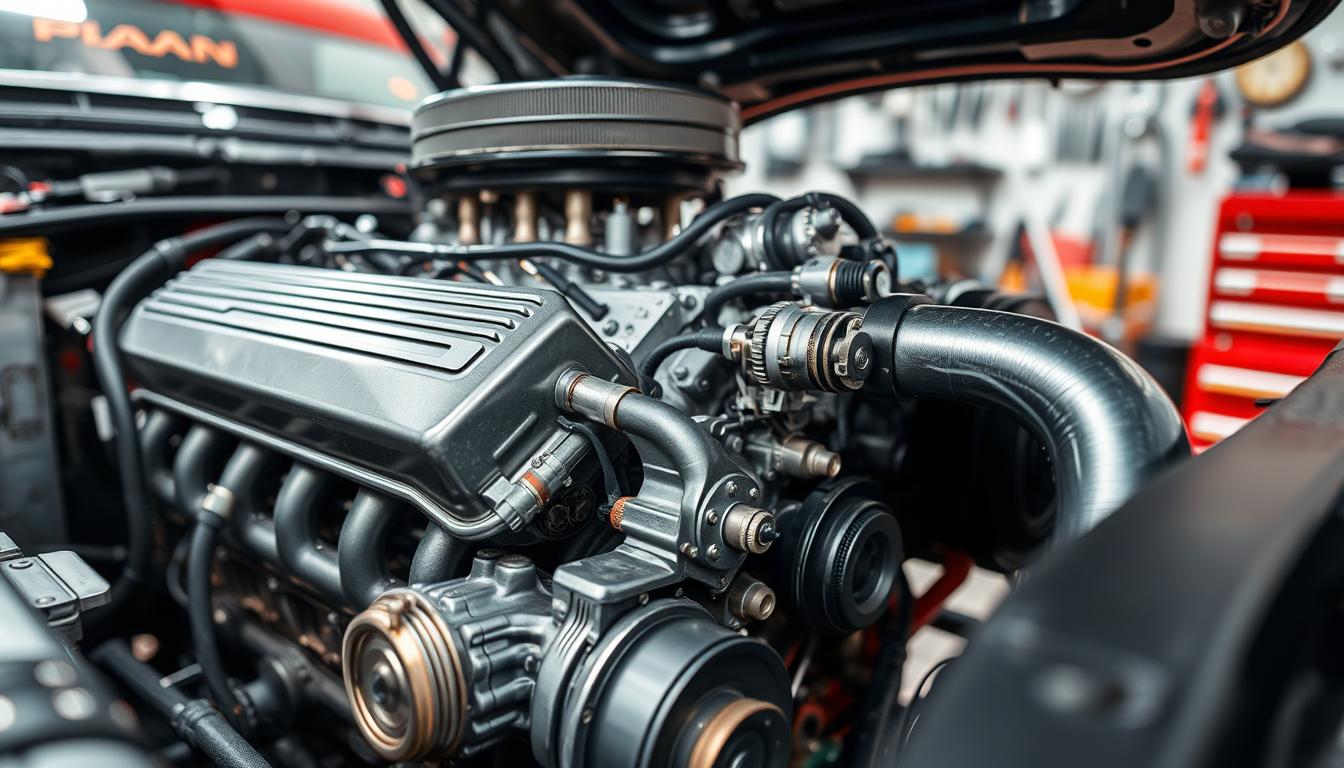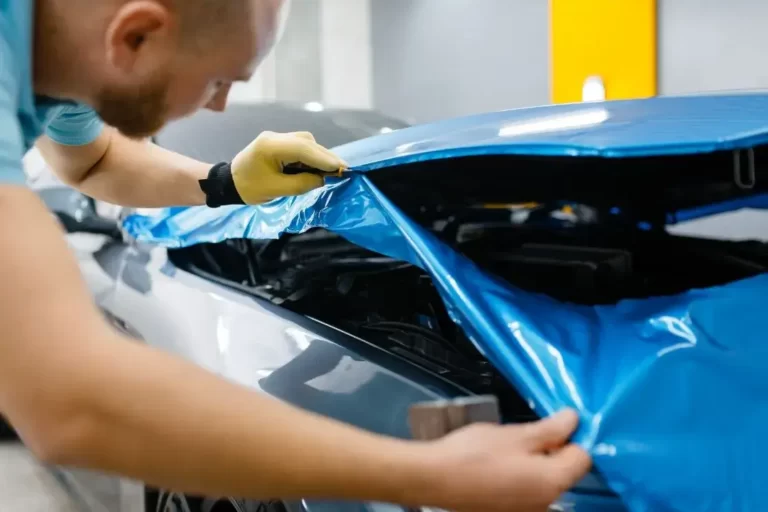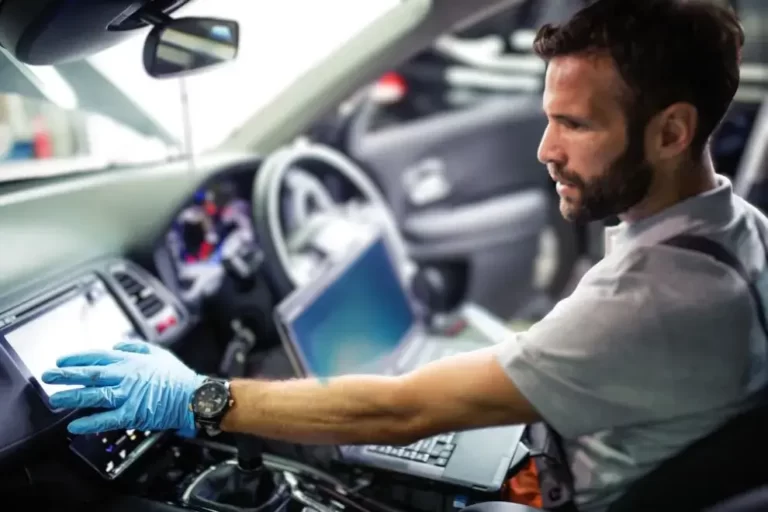VE Commodore Problems: Common Issues and Solutions
Did you know that the timing chain fault is a very common issue with the V6 engine in the VE Commodore, resulting in stretched timing chains and a costly fix? This surprising statistic highlights the prevalence of problems that owners of this iconic Australian vehicle can face. From engine troubles and transmission concerns to electrical faults, suspension system issues, and exterior damage, understanding the common VE Commodore problems and how to effectively resolve them is crucial for maintaining the performance and longevity of this beloved car.
The VE Commodore, the last model of the iconic Holden Commodore nameplate released in 2006, has been known to experience a variety of common problems that can be costly if not addressed promptly. By addressing these issues and implementing proactive maintenance, VE Commodore owners can ensure their vehicle’s safety, reliability, and longevity.
Key Takeaways
- Timing chain faults, hydraulic lifter noise, and spark plug flooding are common engine issues in the VE Commodore.
- Electrical problems like sensor errors, ECU malfunctions, and lighting failures are prevalent in VE Commodores.
- Transmission concerns, such as automatic transmission shuddering and manual clutch slipping, are also common in this model.
- Suspension problems, including worn shock absorbers and defective ball joints, can impact handling and safety.
- Overheating, water pump failures, and other cooling system malfunctions are known issues in VE Commodores.
Introduction to VE Commodore Problems
The Holden VE Commodore was a significant model in the history of the Commodore nameplate, marking the transition to a completely new platform. While the VE offered improved performance and features, it also introduced a range of common problems that owners have had to contend with over the years.
Overview of VE Commodore Model
Nearly 350,000 Commodores were sold between the VE’s 2006 introduction and the 2013 launch of the VF model. The VE Commodores included models with engines such as the 270kW L98, 260kW L76, and later the AFM-equipped L77. HSV models featured engines like the 307kW (412hp) six-litre Gen III LS2 V8s up to 2008, before switching to 6.2-litre Gen IV LS3 engines of between 317kW (425hp) and 325kW (436hp). The VE Commodore’s V8 models had six-speed transmissions, including both manual and auto options, with varying differential ratios from 2.92 to 3.7 depending on the model.
Importance of Addressing Common Issues
Understanding these issues and how to properly address them is crucial for maintaining the reliability, safety, and longevity of the VE Commodore. By being proactive in identifying and resolving common problems, VE Commodore owners can ensure their vehicle continues to provide reliable and enjoyable driving experiences.
“The VE Commodore was the first Holden to be produced with a single side body stamp, improving torsional rigidity over its predecessor.”
| VE Commodore Key Facts | Details |
|---|---|
| Production Years | 2006 – 2013 |
| Engine Options | 270kW L98, 260kW L76, 307kW LS2 V8, 317-325kW LS3 V8 |
| Transmission Options | 6-speed manual and automatic |
| Differential Ratios | 2.92 to 3.7 |
| Limited Edition Model | W427 with 7.0L LS7 engine (137 units produced) |
| Fuel Efficiency Upgrade | E85-capable ‘Flex-Fuel’ technology introduced in MY11 |
| Wheel Upgrades | 69.9mm center bore, 14mm wheel studs |
Engine Troubles and Solutions
The VE Commodore’s engine has faced a range of common issues that owners should be aware of. One prevalent problem is timing chain failure, particularly in the V6 models. The timing chain can stretch and fail over time, leading to costly repairs. Additionally, the V6 engines in the VE Commodore are prone to hydraulic lifter noise, which can be mistaken for more serious timing chain problems.
Another engine-related issue that VE Commodore owners may encounter is spark plug flooding. This can occur due to starting problems or a failing battery, causing the plugs to become flooded with fuel and unable to spark properly. Addressing these engine troubles promptly is crucial for maintaining the VE Commodore’s performance and preventing further damage.
Timing Chain Issues
The timing chain in the VE Commodore, particularly the V6 models, is susceptible to stretching and failure over time. This can lead to costly repairs and is often a result of poor servicing history or high mileage. Owners should be vigilant in monitoring the timing chain’s condition and replace it as recommended by the manufacturer to avoid costly breakdowns.
Hydraulic Lifter Noise
The VE Commodore’s V6 engines are known to experience hydraulic lifter noise, which can be mistaken for more serious timing chain problems. This noise is caused by the hydraulic lifters, which can become worn or malfunctioning over time. Addressing this issue promptly can help prevent further engine damage and ensure optimal performance.
Spark Plug Flooding
Spark plug flooding is another common engine issue encountered in the VE Commodore. This problem can arise due to starting problems or a failing battery, causing the plugs to become flooded with fuel and unable to spark properly. Diagnosing and resolving spark plug flooding is crucial for maintaining the engine’s overall health and performance.
| Issue | Symptoms | Possible Causes | Solutions |
|---|---|---|---|
| Timing Chain Issues | Engine misfiring, poor performance, rattling noise | Stretched or broken timing chain, worn timing chain components | Timely replacement of the timing chain and related components |
| Hydraulic Lifter Noise | Ticking or clacking noise from the engine | Worn or malfunctioning hydraulic lifters | Inspection and replacement of the hydraulic lifters |
| Spark Plug Flooding | Difficulty starting the engine, misfiring, rough idling | Faulty battery, starting problems, fuel system issues | Diagnose and resolve the underlying cause, clean or replace the spark plugs |
“Addressing these engine troubles promptly is crucial for maintaining the VE Commodore’s performance and preventing further damage.”
Electrical Faults and Fixes
The Holden VE Commodore, a popular Australian vehicle, has also encountered its fair share of electrical problems. One of the most common issues is with the wiring harness, where the insulation can deteriorate over time, leading to short circuits and a range of electrical malfunctions.
Faulty engine sensors and ECU (Engine Control Unit) faults are also relatively widespread in the VE Commodore. These issues can result in starting problems, random stalling, or poor engine performance. Addressing these electrical faults promptly is crucial for ensuring the continued reliable operation of your VE Commodore.
According to user discussions on various forums, some VE Commodore owners have reported problems such as the radio not turning off automatically, dashboard and speedometer lights malfunctioning, and the CD player and air conditioning not responding. These issues may be caused by aftermarket modifications or faulty connections, and a few users have suggested that tapping the CD player/air conditioning fascia can temporarily resolve the problem, indicating a potential loose wire issue.
To troubleshoot these electrical problems, users have recommended consulting Holden dealerships for warranty claims or seeking the help of auto electricians for non-warranty cases. Some suggested solutions include unplugging the radio to isolate the issue, resetting the PCM/BCM, and checking the driver’s door switch, as it may affect the radio turning off. Upgrading to a higher capacity battery, such as a 600cca, has also been mentioned as a preventive measure against battery drainage issues.
Keeping up with software updates and regular maintenance are also important steps in addressing the electrical challenges faced by VE Commodore owners. By staying proactive and addressing these issues promptly, you can ensure your VE Commodore continues to provide a reliable and enjoyable driving experience.
Transmission Concerns and Repairs
Transmission issues are a common problem faced by owners of the Holden VE Commodore. The 6-speed automatic transmission in these vehicles is particularly prone to failure, with worn-out seals and other internal components causing shuddering during gear changes or even complete gear selection failure. Manual transmission-equipped VE Commodores have also been known to suffer from clutch slippage, making it difficult to properly engage gears.
Automatic Transmission Shuddering
The 6-speed automatic transmission in the VE Commodore has been a source of frustration for many owners. Issues like torque converter shuddering, hesitation during acceleration, and gear selection problems have been reported. These transmission concerns can be traced back to faulty components, such as worn-out seals and internal wear, which can lead to poor performance and even complete transmission failure.
Manual Transmission Clutch Slipping
Owners of VE Commodores equipped with manual transmissions have also experienced their fair share of problems. The clutch in these vehicles can be prone to slipping, making it difficult to properly engage gears. This issue can be caused by a variety of factors, including worn-out clutch components, improper adjustment, or even a problem with the transmission itself.
Prompt attention to these transmission concerns is crucial for maintaining the VE Commodore’s drivability and preventing further damage. Addressing these issues, whether through repairs or replacement, can help ensure a smooth and reliable driving experience.
| Issue | Symptom | Potential Cause | Repair Cost |
|---|---|---|---|
| Automatic Transmission Shuddering | Jerky gear changes, hesitation during acceleration | Worn-out seals, internal component failure | $1,500 – $2,500 |
| Manual Transmission Clutch Slipping | Difficulty engaging gears, loss of power | Worn-out clutch components, improper adjustment | $800 – $1,200 |
By addressing these common VE Commodore transmission problems, such as automatic transmission shuddering and manual transmission clutch issues, owners can ensure their vehicles continue to perform at their best and avoid costly repairs down the line.
VE Commodore Problems
The VE Commodore, a popular model within the Holden lineup, has been known to experience a range of common problems that can impact its performance, reliability, and longevity. From engine troubles to electrical faults, transmission concerns, and suspension system issues, understanding these problems and how to effectively resolve them is crucial for VE Commodore owners.
One of the most prevalent issues with the VE Commodore is the timing chain fault, a common problem affecting the V6 engine. The timing chain, responsible for synchronizing the engine’s valves, can become stretched over time, leading to significant problems. Noisy hydraulic lifters are another common engine-related issue, as well as spark plug flooding caused by the V6 engine’s propensity to flood itself after starting issues.
Electrical faults in the VE Commodore are also noteworthy, with excessive voltage drop problems being relatively common due to the main battery location in the boot or behind the seats. Engine mounts, particularly the passenger side, are susceptible to splitting, further compounding maintenance challenges.
- Timing chain faults in V6 engines are a frequent problem, leading to costly repairs.
- Noisy hydraulic lifters are a common issue in the VE Commodore’s V6 engine.
- Spark plug flooding is a common problem caused by the V6 engine’s tendency to flood itself after starting issues.
- Voltage drop problems are relatively common due to the battery location in the VE Commodore.
- Engine mounts, especially the passenger side, are prone to splitting.
Understanding and addressing these common VE Commodore problems is essential for maintaining the vehicle’s performance, reliability, and longevity. Regular servicing, following the manufacturer’s recommendations, and proactive troubleshooting can help VE Commodore owners mitigate these issues and ensure their vehicle continues to deliver a satisfactory driving experience.
Suspension System Issues and Resolutions
The VE Commodore’s suspension system can also experience common issues over time. Worn shock absorbers can lead to poor handling and an uncomfortable ride, while defective ball joints can cause alignment problems and potentially dangerous driving conditions. Addressing these VE Commodore suspension problems promptly is crucial for ensuring the vehicle remains safe and reliable on the road.
Worn Shock Absorbers
Shock absorbers play a vital role in maintaining a smooth and controlled ride. Over time, these components can wear down, leading to a noticeable decrease in the vehicle’s handling and stability. Owners have reported experiencing a knocking or clunking noise from the rear suspension, particularly when driving over small bumps.
To address this issue, a bulletin was issued by the manufacturer, outlining the replacement of a lower washer with a modified design on each rear damper for specific MRC models. This modification helped eliminate the “thud” issue and improved the overall stability and performance of the suspension system.
Defective Ball Joints
Ball joints are another critical component of the VE Commodore’s suspension system. When these joints become worn or defective, they can cause alignment problems, leading to uneven tire wear and potentially hazardous driving conditions. Some owners have reported having to replace their rear coil springs or tighten the suspension to address these VE Commodore suspension problems.
In addition to worn shock absorbers and ball joints, issues with sway bar links can also contribute to suspension-related problems. Sway bar link failure can result in noise, looseness, or breakage, which can significantly impact the vehicle’s handling and performance. Regular visual inspection and prompt replacement of damaged sway bar links is essential for maintaining the VE Commodore’s suspension system in optimal condition.
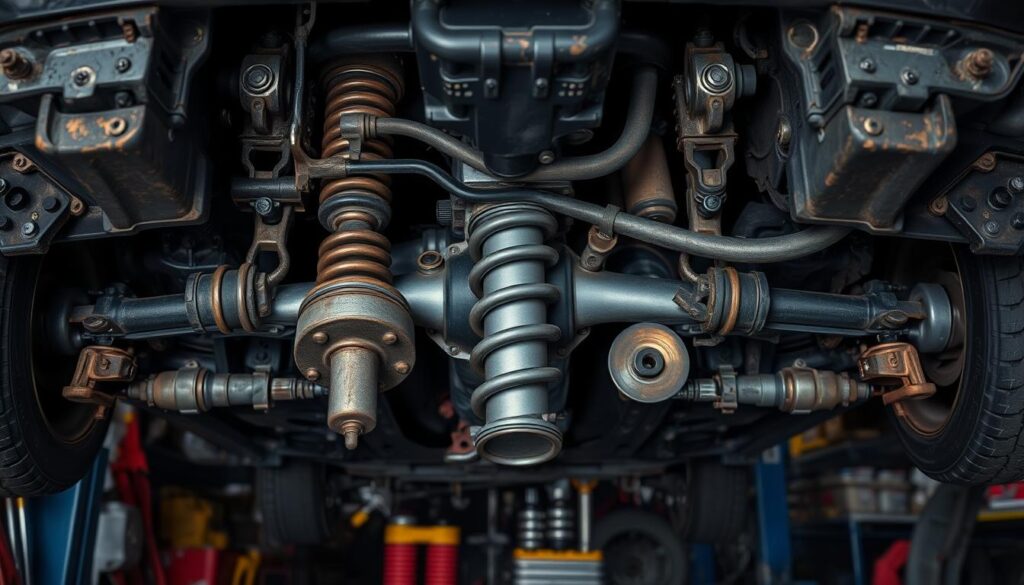
By addressing these VE Commodore suspension issues, such as worn shock absorbers and defective ball joints, owners can ensure their vehicles continue to provide a smooth, safe, and comfortable driving experience. Investing in high-quality replacement parts and seeking professional assistance when necessary can help mitigate these common suspension-related concerns and keep the VE Commodore performing at its best.
Cooling System Malfunctions and Maintenance
The VE Commodore’s cooling system is prone to several issues that can lead to overheating problems. Addressing these cooling system malfunctions in a timely manner is crucial to prevent further damage to the engine, such as blown head gaskets or cracked radiators.
Overheating Problems
Overheating in a VE Commodore can be caused by a range of factors, including insufficient coolant, a worn-out water pump, a clogged radiator, or a malfunctioning thermostat. It’s recommended to check the coolant level every 15 days to maintain the proper level for the cooling system to function effectively. Additionally, the coolant should be changed every 30,000 miles (50,000 kilometers) or after 2 years to prevent overheating issues.
Water Pump Failures
The water pump is a crucial component of the VE Commodore’s cooling system, and its failure can lead to serious overheating problems. Approximately 30% of VE Commodore problems are related to cooling system malfunctions. It’s important to regularly inspect the water pump for signs of wear and replace it if necessary to ensure the proper circulation of coolant and maintain optimal engine temperature.
“Checking the coolant level every 15 days is recommended to maintain the proper level for the cooling system to function effectively.”
In addition to the water pump, other cooling system components, such as the radiator, hoses, and thermostat, should also be inspected and serviced regularly to prevent overheating issues in the VE Commodore. Neglecting the cooling system can lead to significant engine damage, so it’s crucial to stay on top of maintenance and address any problems promptly.
Interior Defects and Repairs
The VE Commodore’s interior is not immune to common issues, with problems such as persistent airbag warning lights and seatbelt retraction faults being reported by owners. These interior defects can pose safety concerns and should be addressed promptly by qualified mechanics to ensure the continued safe operation of the vehicle.
Airbag Light Issues
One of the recurring interior problems with the VE Commodore is the illumination of the airbag warning light on the dashboard. This issue can be caused by a variety of factors, including faulty sensors, wiring problems, or issues with the airbag control module. Ignoring this warning light can have serious consequences, as it indicates a potential malfunction in the vehicle’s critical safety system.
Seatbelt Retraction Faults
Another common interior problem with the VE Commodore is seatbelt retraction issues. Over time, the mechanisms responsible for retracting the seatbelts can wear out or become damaged, leading to problems with the seatbelts locking up or failing to retract properly. This can not only be a nuisance but also compromise the safety of the vehicle’s occupants in the event of a collision.
| Issue | Potential Causes | Recommended Solutions |
|---|---|---|
| Airbag Light Issues |
|
|
| Seatbelt Retraction Faults |
|
|
Addressing these interior defects in the VE Commodore is crucial for maintaining the vehicle’s safety and reliability. Prompt attention to issues like airbag light problems and seatbelt retraction faults can help ensure the continued protection of the vehicle’s occupants and prevent more serious problems from developing.
Exterior Damage and Prevention
The exterior of the VE Commodore can be susceptible to a range of issues, including paint peeling, rusting, scratches, and fading. These problems can arise from various factors, such as prolonged exposure to harsh UV rays, inadequate maintenance, or manufacturing defects. Addressing exterior damage promptly and implementing preventative measures can help preserve the VE Commodore’s appearance and maintain its value over time.
Paint Peeling and Rusting
The VE Commodore’s painted surfaces can be vulnerable to peeling and rusting, especially in areas exposed to the elements. This can be exacerbated by factors like poor quality paint, improper preparation during the manufacturing process, or lack of regular washing and waxing. Addressing paint peeling and rust issues early on can prevent further deterioration and help maintain the vehicle’s overall aesthetic appeal.
Scratches and Fading
The VE Commodore’s exterior can also be susceptible to scratches and fading, which can detract from its visual appeal. Scratches can occur from various sources, such as contact with other objects, while fading can be caused by prolonged exposure to UV radiation. Proper care, such as regular washing, waxing, and using protective treatments, can help mitigate these issues and preserve the VE Commodore’s exterior finish.
| Issue | Cause | Prevention |
|---|---|---|
| Paint Peeling | Exposure to UV rays, poor paint quality, improper preparation | Regular washing and waxing, using high-quality paint protection products |
| Rusting | Exposure to moisture, lack of proper rust prevention measures | Regular inspection and treatment of rust-prone areas, using rust-inhibiting products |
| Scratches | Contact with other objects, poor parking techniques | Careful handling, use of protective coatings, and avoiding situations that may lead to scratches |
| Fading | Prolonged exposure to UV radiation | Frequent washing, application of UV-blocking waxes and sealants, and parking in shaded areas |
By addressing exterior issues and implementing preventative measures, VE Commodore owners can help maintain the vehicle’s visual appeal and preserve its value over time. Regular maintenance, use of quality products, and careful handling can all contribute to the long-term durability and appearance of the VE Commodore’s exterior.
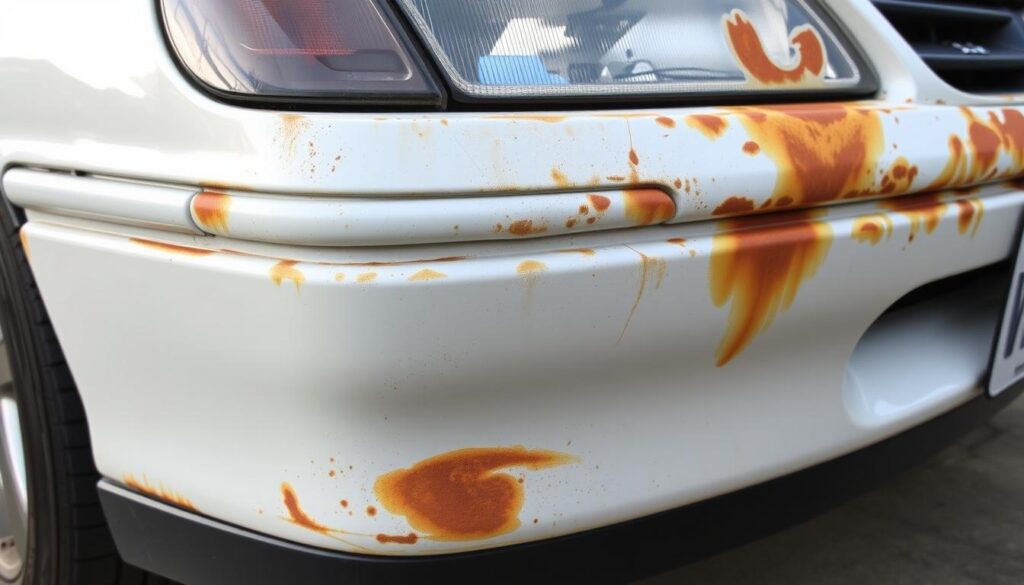
Fuel System Failures and Solutions
The VE Commodore’s fuel system is another area where common problems can arise. Issues such as fuel tank corrosion, fuel injector leaks, and fuel pump failures can all impact the vehicle’s performance and fuel efficiency. Addressing these VE Commodore fuel system problems promptly is crucial for maintaining the VE Commodore’s overall reliability and drivability.
Fuel tank corrosion can be a significant concern, leading to leaks and potential fire hazards. Regular inspections and timely replacements are essential to prevent this issue. Similarly, fuel injector issues and fuel pump failures can cause starting problems, rough idling, and reduced fuel economy. Proactive maintenance, including regular fuel system cleanings and component replacements, can help mitigate these concerns.
| Fuel System Issue | Symptoms | Potential Causes | Solutions |
|---|---|---|---|
| Fuel Tank Corrosion | Fuel leaks, poor fuel delivery | Age, moisture, contaminants | Inspect tank for rust, replace if necessary |
| Fuel Injector Issues | Hard starting, rough idling, reduced fuel efficiency | Clogging, wear, electrical problems | Clean or replace fuel injectors, check electrical connections |
| Fuel Pump Failures | Difficulty starting, loss of power, stalling | Age, electrical issues, low fuel level | Replace fuel pump, inspect electrical components |
By staying vigilant and addressing VE Commodore fuel system problems promptly, you can maintain the optimal performance and reliability of your vehicle. Regular maintenance and proactive solutions can help you avoid costly repairs and ensure a smooth, efficient driving experience.
Conclusion
The Holden VE Commodore, a beloved and iconic Australian vehicle, is not without its common problems. From engine troubles and electrical faults to transmission concerns and exterior damage, VE Commodore owners must be aware of the potential issues they may encounter. By understanding these common problems and taking proactive steps to address them, VE Commodore owners can ensure their vehicles continue to provide reliable and enjoyable driving experiences for years to come.
Maintaining Holden vehicles, including the VE Commodore, requires diligence and a willingness to address problems as they arise. The payoff, however, is a well-performing and long-lasting car that embodies the spirit of Australian automotive engineering. Whether it’s addressing engine issues, resolving electrical faults, or dealing with transmission concerns, VE Commodore owners must remain vigilant and proactive to keep their beloved vehicles running at their best.
As the Holden VE Commodore continues to occupy a special place in the hearts of Australian drivers, it is essential to address the common problems associated with this iconic model. By understanding the importance of addressing these issues and maintaining Holden vehicles, VE Commodore owners can enjoy the performance and reliability that has made this car a cherished part of the Australian automotive landscape.

